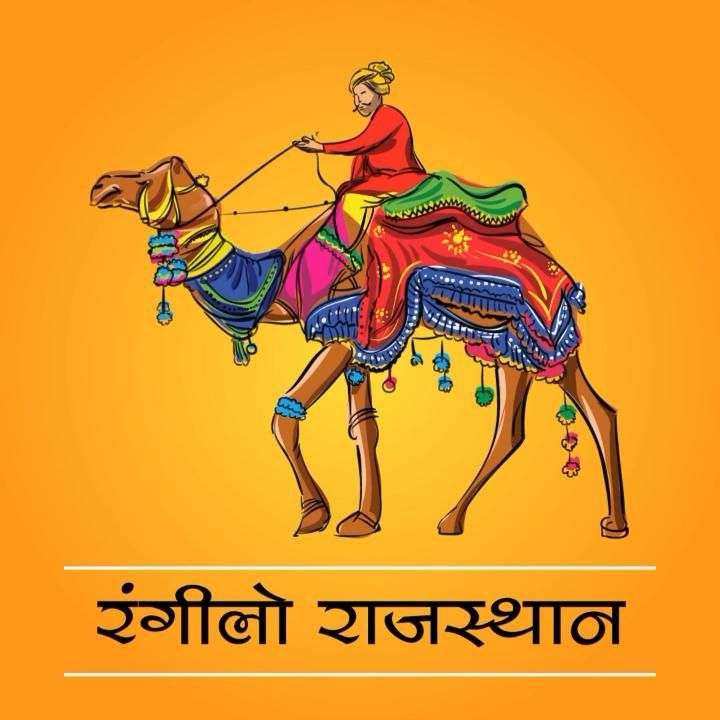The literal meaning of Rajasthan is “Place of Kings.” The cities of Rajasthan still have a medieval feel to them today, offering the traveler a wealth of sightseeing options. Rajasthan has an endless list of things to do, ranging from visiting the royal palaces and museums to shopping and desert safaris. a popular travel destination among Indian and foreign tourists. Rajasthan is famous for its textiles, ethnic leather goods, ceramics, ties and dyeing, block printing, embroidery, silver and gold embossing on fabrics, elegant gold and silver jewelry, furniture, miniature paintings, and blue and ceramic carpets.
Rajasthan has long captivated the world with its rugged charm and vibrant culture. Home to the Rajput empire, it boasts an astonishing architecture of forts, monuments, camel fairs, exquisite local clothing, and jewelry, as well as delicious cuisine. Visitors from all over the world continue to flock to diverse historic mansions, desert safaris, and more, not only for vacations but also for special occasions like weddings.
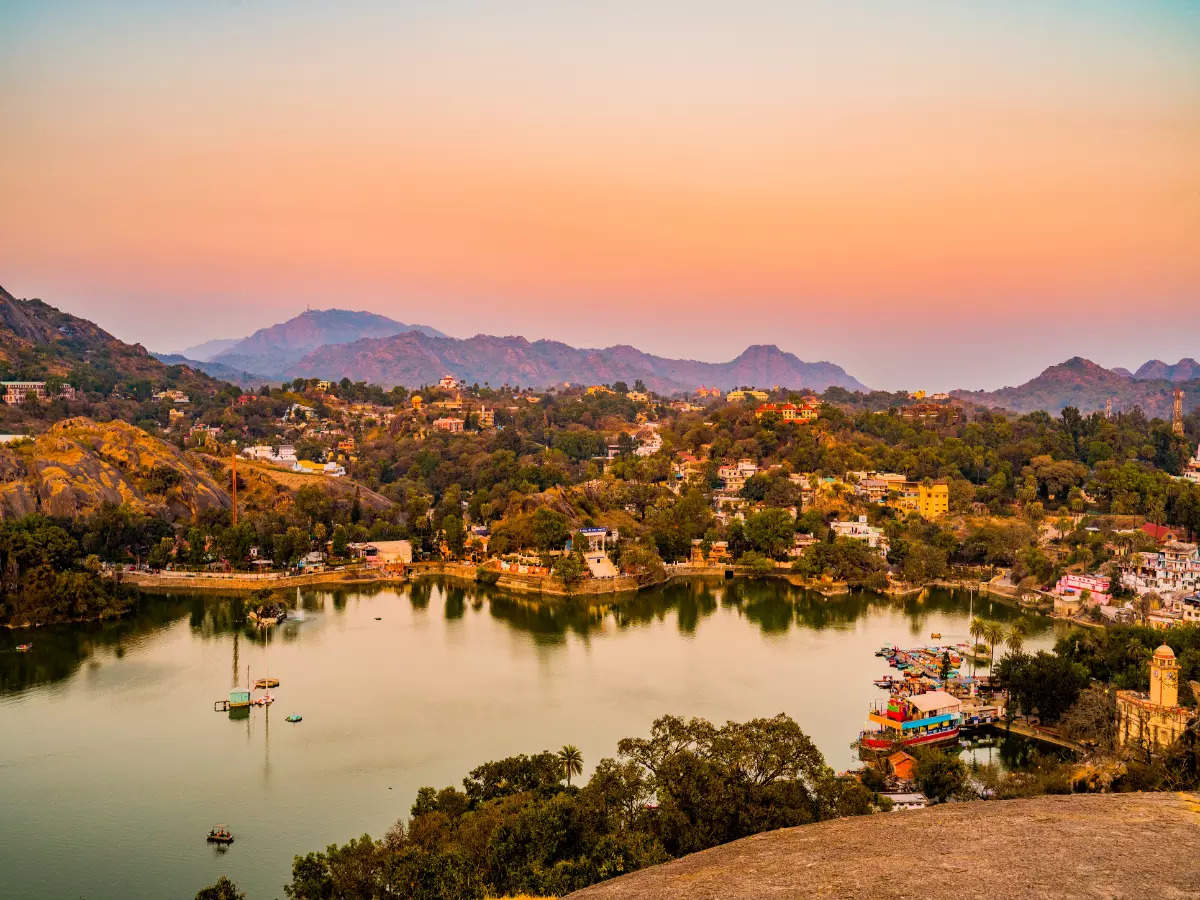
Mt. Abu is a beautiful hill station in Rajasthan, with the famous Dilwara temples, which are stunning in marble with intricate carvings. It also has several Hindu temples carved out of a single rock. Mt. Abu has a wildlife sanctuary that runs through the mountains.
One city that has captured the imagination of the West and the silver screen is Udaipur. Gorgeous lakes and historic fortified hotels like Maharana Pratap Smarak, Moti Magri, and Saheliyon ki Bari, “Garden of the Bridesmaids,” make it a treat for visitors. Nearby is the Nathdwara Temple, the seat of Vaishnavite philosophy.
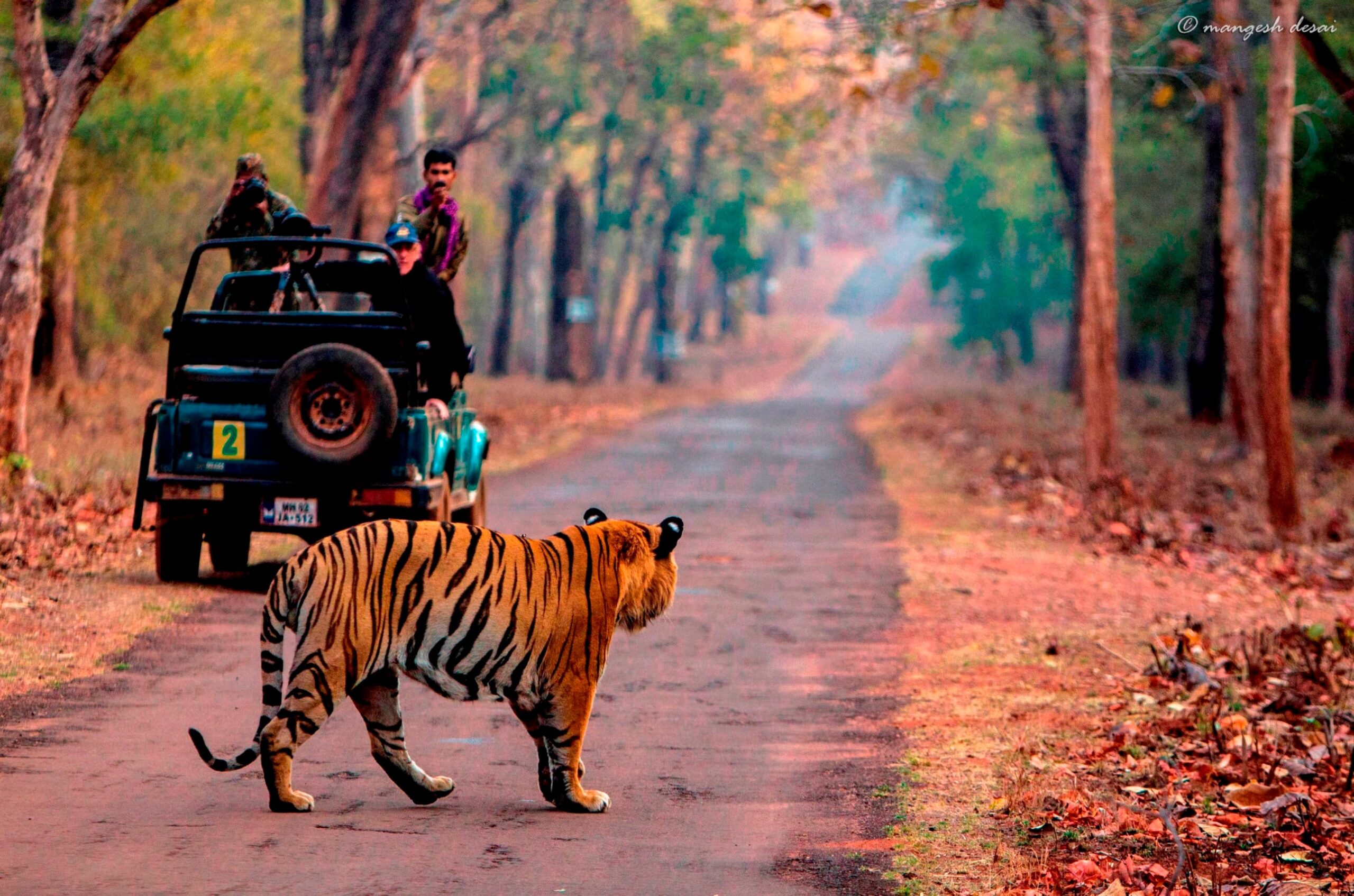
Moving from Udaipur to Pushkar, one can find the famous Chittorgarh Fort, Ranakumbha Palace, Meera Mandir, Vijay Stambh, and Padmini Palace. The Moinuddin Chishti Darga monument awaits in Ajmer, which is also home to India’s only Bhrama temple and the colorful Pushkar fair.
The Ranthambore Tiger Reserve is the next location on the map, where wildlife photographers can capture images of various animals in their natural habitats. A visit to Rajasthan would be incomplete without visiting Jaipur, which is renowned for its exquisite semiprecious jewelry, bandhani, handicrafts, silks, the magnificent Hawa Mahal, and the Jantar Mantar. If the desert landscape and its extravagant culture captivate you, Bikaner and Jaisalmer are the places to go. Bikaner has a long history of forts and temples, and in Jaisalmer, you can enjoy traditional folk dances, camel rides, and fabulous dinners while watching the sunset over the dunes.
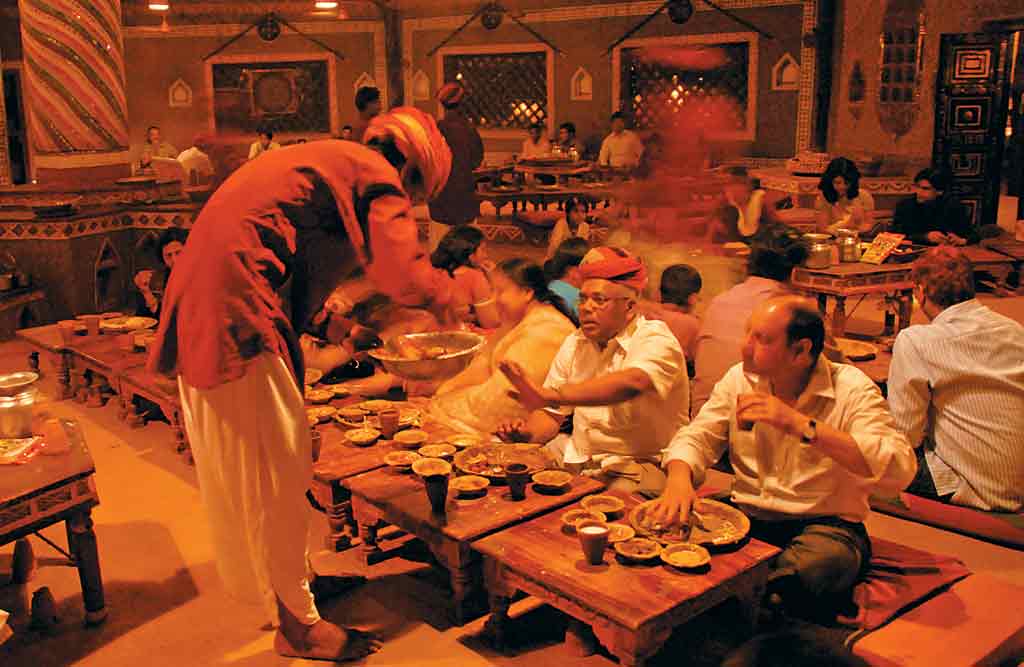
Food: The former princely state of Rajasthan has given rise to a royal cuisine. The Rajas who went hunting ate the meat or fowl they brought back. Even today, the meat cuisines of Rajasthan are unmatched. The cooking style followed in Rajasthan is based on the natural climatic conditions of this desert land. There is a shortage of water and fresh vegetables in the state of Rajasthan, which negatively impacts its cuisine; hence, in the desert belts of Rajasthan, it is preferred to use milk, buttermilk, and butter in large quantities. Vegetarian Rajasthani food cooked in pure ghee is equally delicious. The tastiest Rajasthani curries are based on the use of legumes or chickpea flour. Nuts, spices, and yogurt are used in many delicacies. The most popular dishes are dal bati churma and missi roti. There is a popular sweet from every region like Mawa Kachori of Jodhpur, Rasogullas of Bikaner, Ghevar of Jaipur, Malpuas of Pushkar, etc.
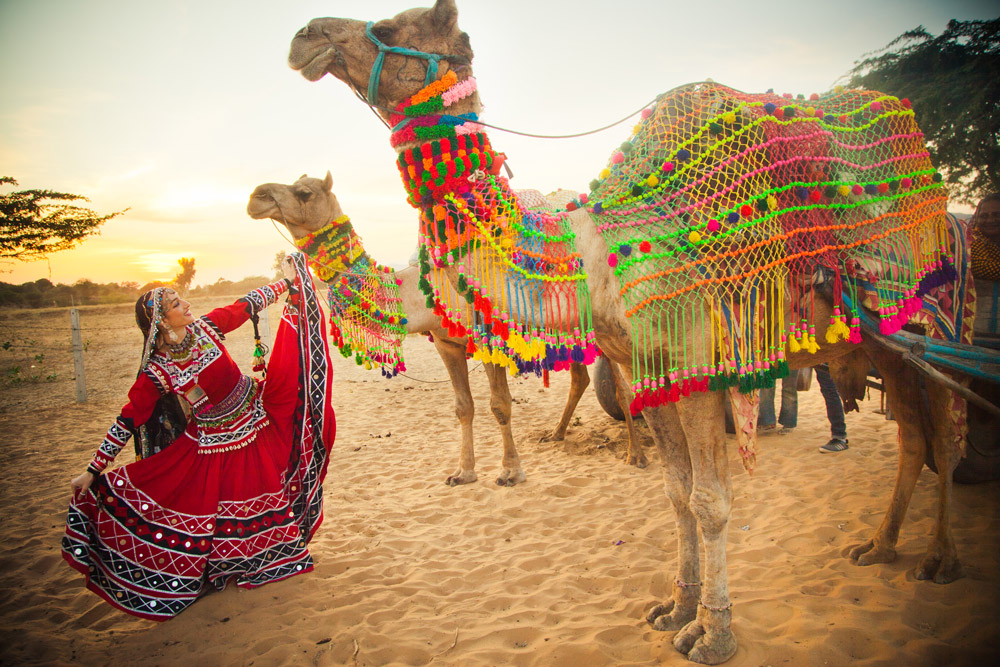
Culture: Rajasthanis have an amazing joie de vivre and a love of fun despite the relative poverty of the desert nomads and the challenging living conditions they encounter. They live colorful and happy life. Each region has its distinct dance, song, and music styles, and they have a long history of folk music and dance. There are several communities of professional artists in Rajasthan, and they travel to villages for their performances.
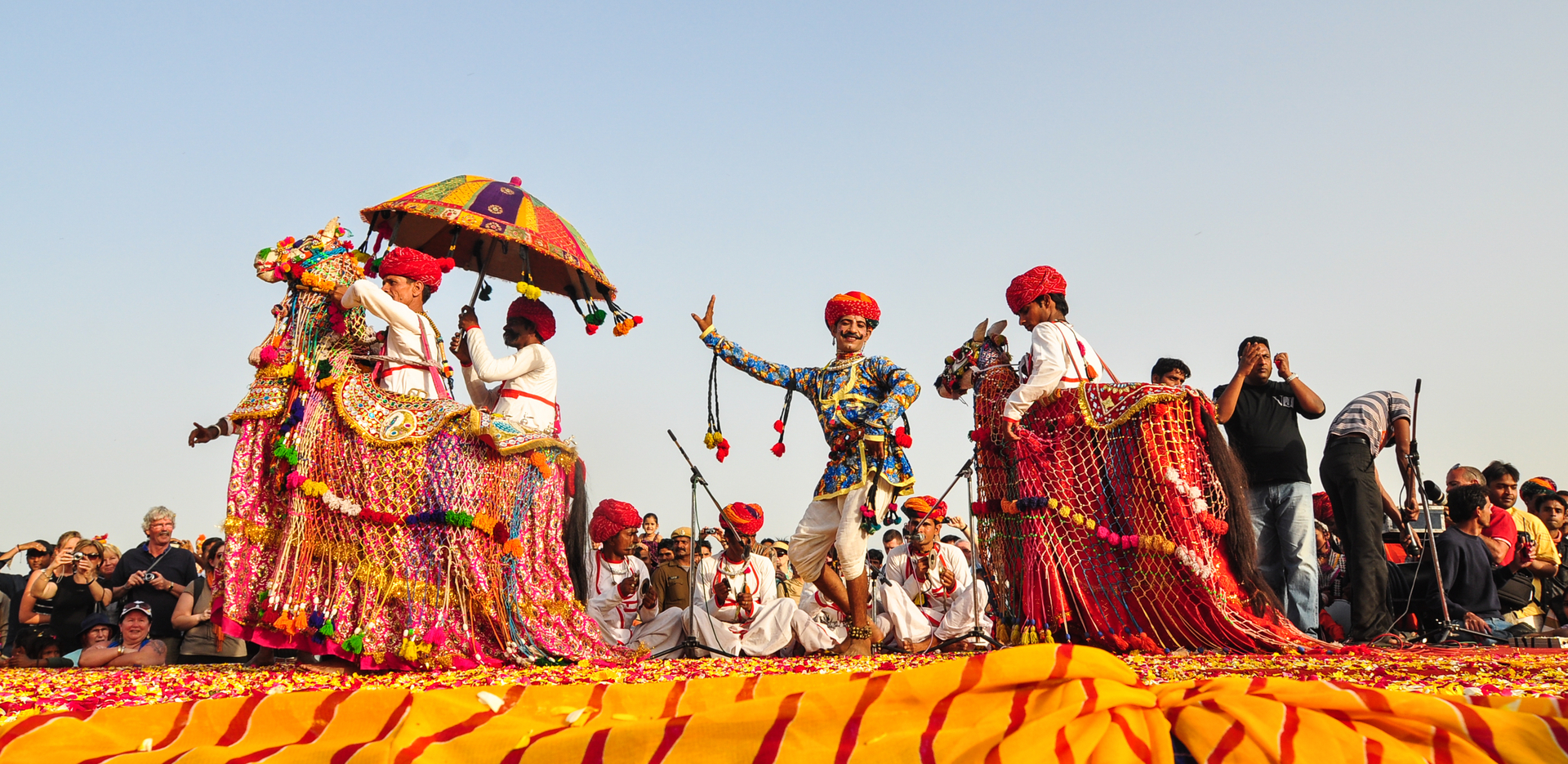
People: The important communities of Rajasthan are the Rajputs, Jats, Brahmans, and traders. The women wear long, flowing cotton ‘Ghagras’ of dazzling colors, highlighted by brilliant gold and silver ‘Gota’ or ‘Zari,” which offset the dull and barren landscape. They like to wear silver jewelry and keep their faces completely veiled for privacy and also to protect themselves from the scorching sun and sand. The men are tall and usually sport long, twisted mustaches and often beards. The men are tall and frequently have beards and mustaches that are twirled. They dress in colorful turbans that can be worn in a variety of ways to indicate caste and region.
